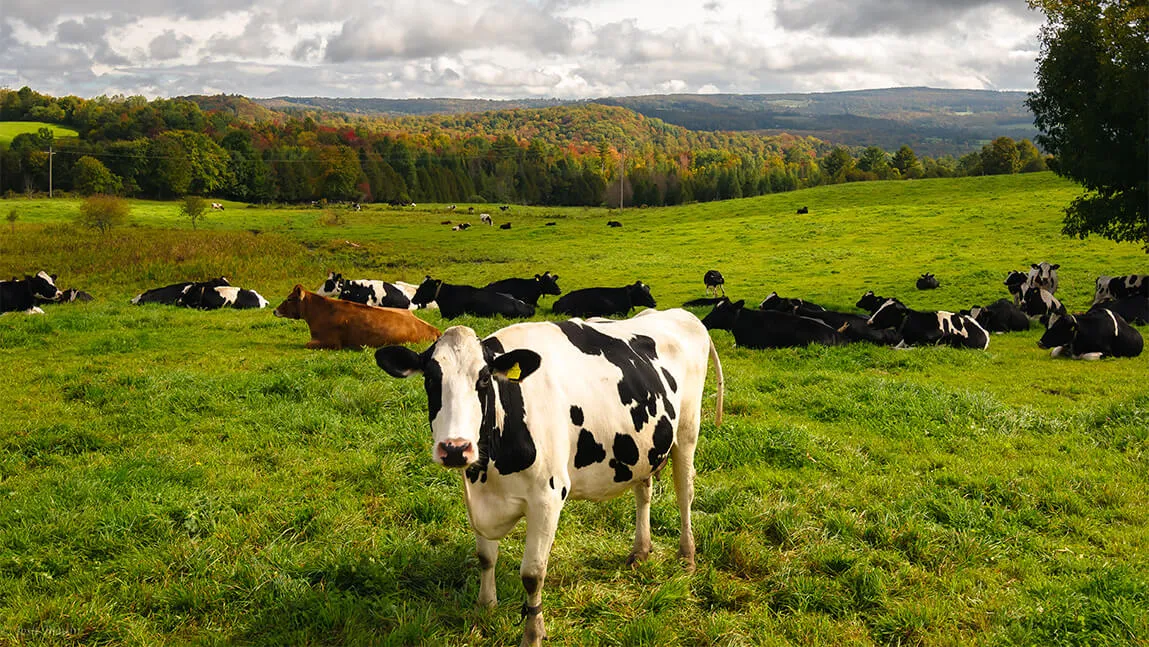The dairy industry is a staple of Vermont: herds of cows, rolling hills, and farming operations are still present in almost every part of the state. And yet, this idyllic picture does not reflect the full reality of dairy farming.
In the highly competitive dairy industry, milk product prices are nationally subsidized, and hiring immigrant, often undocumented, labor provides a way for dairy operations to minimize costs. The Vermont dairy industry is dependent on immigrant labor to compete in the nationally subsidized market.
However, some dairy farming practices can be quite harmful to workers. The high demand for immigrant dairy workers, matched with a lack of financial and medical security, means that immigrant workers bear the brunt of the risks of dairy farming in terms of health issues, social alienation, and wage inequality.
“This is quite problematic on multiple levels because when the industry cuts costs wherever they can, it impacts the workers the most,” said Bindu Panikkar, assistant professor in the University of Vermont (UVM) Rubenstein School of Environment and Natural Resources. “Migrant dairy farm workers face a variety of work-related health risks and barriers.”
Collaborating with the advocacy group Migrant Justice, Panikkar and UVM College of Agriculture and Life Sciences former undergraduate student Mary-Kate Barrett ‘20 explore this issue in their study Precarious Essential Work, Immigrant Dairy Farmworkers, and Occupational Health Experiences in Vermont published in the International Journal of Environmental Research and Public Health in 2021. The research team conducted interviews with relevant community organizations in Vermont and used interviews and surveys by Migrant Justice to examine environmental risks, occupational hazards, and health outcomes experienced by migrant dairy farm workers in the state.
Almost 80 percent of the milk produced in the United States comes from farms that employ immigrant workers, and more then 50 percent of all labor in the dairy industry is performed by immigrants. The dairy industry is central to Vermont: 20 percent of Vermont’s land is invested in agriculture; Vermont generates 63 percent of all milk produced in New England; and the Vermont dairy industry brings in roughly $2.2 billion dollars each year. These factors make Vermont an ideal setting to explore immigrant labor conditions in the dairy industry.
As for health risks and occupational hazards, the dairy industry has one of the highest fatality and injury rates among agricultural professions. A majority of injuries come from working with heavy machinery and equipment and handling animals. Furthermore, workers are exposed year-round to chemicals and toxic contaminants, especially acidic cleaning materials, pesticides, and animal care products.
Of the immigrant workers surveyed and interviewed, 67 percent were exposed to chlorine on the job, 51 percent to iodine, and 43 percent to acid. Nearly half of all immigrant workers reported headaches, coughs, and itchy eyes as a result of these exposures. Simple measures such as protective gloves, masks, and aprons can be used in these situations, and yet about 70 percent of respondents report not having access to this protective gear.
Many of the farm workers reported unfair compensation and labor practices: 40 percent receive less than minimum wage; 40 percent have received no days off, and 20 percent have had paychecks illegally withheld. This, along with occupational risks, infrequent or no pay raises, ten- to twelve-hour workdays, and inadequate housing, reveal the full reality of the immigrant dairy experience. Immigrant workers also face mental health issues with little support or resources.
There is also a racial element related to immigrant labor in Vermont.
“The industrial practice of invisibilizing risks also enforces racial capitalism within the dairy industry that disempowers and erases the experience of Hispanic workers in Vermont,” said Panikkar, a faculty fellow in UVM’s Gund Institute of Environment.
As COVID-19 proved, farm and dairy work are essential jobs. The United States and Vermont need immigrant labor to continue the strong tradition in dairy and to grow operations for the increased food demands of the future. The researchers stress that stronger policy and community interventions are also needed to protect immigrant farm workers and increase their safety on the job.
“This type of research and the work of organizations, such as Migrant Justice, are necessary for building awareness and promoting a safer, more humane, and more sustainable dairy industry in Vermont,” said Panikkar who has worked on environmental health and justice issues since 2005.
This research was supported by the UVM Gund Institute of Environment, the Lintilhac Foundation, and UVM’s James M. Jeffords Fund.
